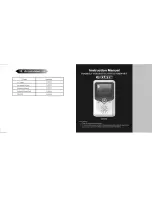
Part No. 80106286
Revision C
19
Installation
Fuel Installation Plan
Removing the end cap, controller end (C):
1. Loosen two self-retaining fasteners (
I
) that secure
the end cap to the unit.
2. Lift the end cap to remove it from the unit.
Attaching the end cap (C):
1. Place the end cap into the unit, aligning the tabs on
the end cap into the slots on the base.
2. Tighten the two self-retaining fasteners (
I
) that
secure the panel to the unit.
Removing the end cap, exhaust end (D):
1. Loosen two self-retaining fasteners (
J
) that secure
the end cap to the unit.
2. Lift the end cap to remove it from the unit.
Attaching the end cap, exhaust end (D):
1. Place the end cap into the unit, aligning the tabs on
the end cap into the slots on the base.
2. Tighten the two self-retaining fasteners (
J
) that
secure the panel to the unit.
Removing the rear panel (E):
1. Using a Phillips head screw driver, loosen two self-
retaining fasteners (
K
) that secure the panel to the
unit.
2. Using a standard blade screw driver, gently lift the
rear panel lip off of the back rail.
3. Tip the rear panel back under the roof (
A
).
4. Move to the back of the unit and lift the rear panel off.
Attaching the rear panel (E):
1. Move to back of unit and place rear panel into the
unit, aligning the tabs on the panel into the slots on
the base.
2. Tip the rear panel forward under the roof (
A
).
3. From the front or side of the unit, align the fasteners
(
K
) and tighten with a Phillips head screw driver.
Removing the control box wiring cover (F):
1. Remove two fasteners (
L
) that secure the control box
wiring cover to the control box.
2. Tip the control box wiring cover down to access field
and control wiring.
Attaching the control box wiring cover (F):
1. Tip the control box wiring cover up.
2. Attach the control box wiring cover with the two
fasteners (
L
).
Fuel Installation Plan
WARNING
Propane and natural
gas are extremely flammable and explosive, which
could cause burns, fire, or explosion, resulting in
death or serious injury.
• A licensed professional must perform the
installation.
• Install the fuel supply system according to NFPA 37
and other applicable fuel-gas codes.
• Before placing the generator into service, properly
purge and leak-test the fuel system lines.
• NO leakage is permitted.
• DO NOT operate the engine if you smell fuel.
DO NOT install the supplied flexible
fuel line underground or in contact with the ground.
• Keep the entire flexible fuel line visible for periodic
inspection. Do not conceal it or run it within any wall,
floor, or partition. Never let the line contact these
structures.
The following information addresses the planning phase
of installations for technicians specializing in gaseous fuel
systems. Always obey the local applicable fuel-gas codes
affecting the installation site. Consult your local fuel
supplier or fire marshal with any questions or problems.
Not for
Reproduction
















































